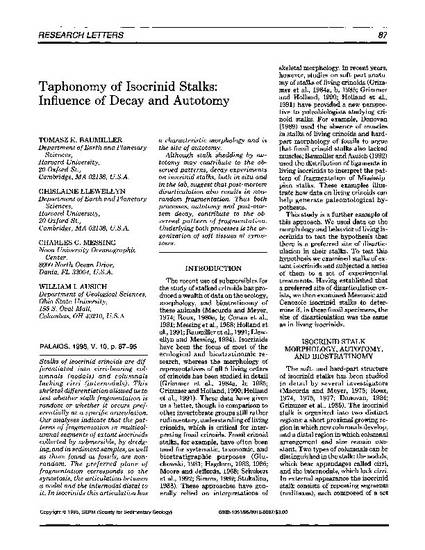
- Crinoid,
- Taphonomy
Stalks of isocrinid crinoids are differentiated into cirri-bearing columnals (nodals) and columnals lacking cirri (internodals). This skeletal differentiation allowed us to test whether stalk fragmentation is random or whether it occurs preferentially at a specific articulation. Our analyses indicate that the patterns of fragmentation in multicolumnal segments of extant isocrinids collected by submersible, by dredging, and in sediment samples, as well as those found as fossils, are nonrandom. The preferred plane of fragmentation corresponds to the synostosis, the articulation between a nodal and the internodal distal to it. In isocrinids this articulation has a characteristic morphology and is the site of autotomy. Although stalk shedding by autotomy may contribute to the observed patterns, decay experiments on isocrinid stalks, both in situ and in the lab, suggest that post-mortem disarticulation also results in nonrandom fragmentation. Thus both processes, autotomy and post-mortem decay, contribute to the observed pattern of fragmentation. Underlying both processes is the organization of soft tissues at synostoses.

©1995, SEPM